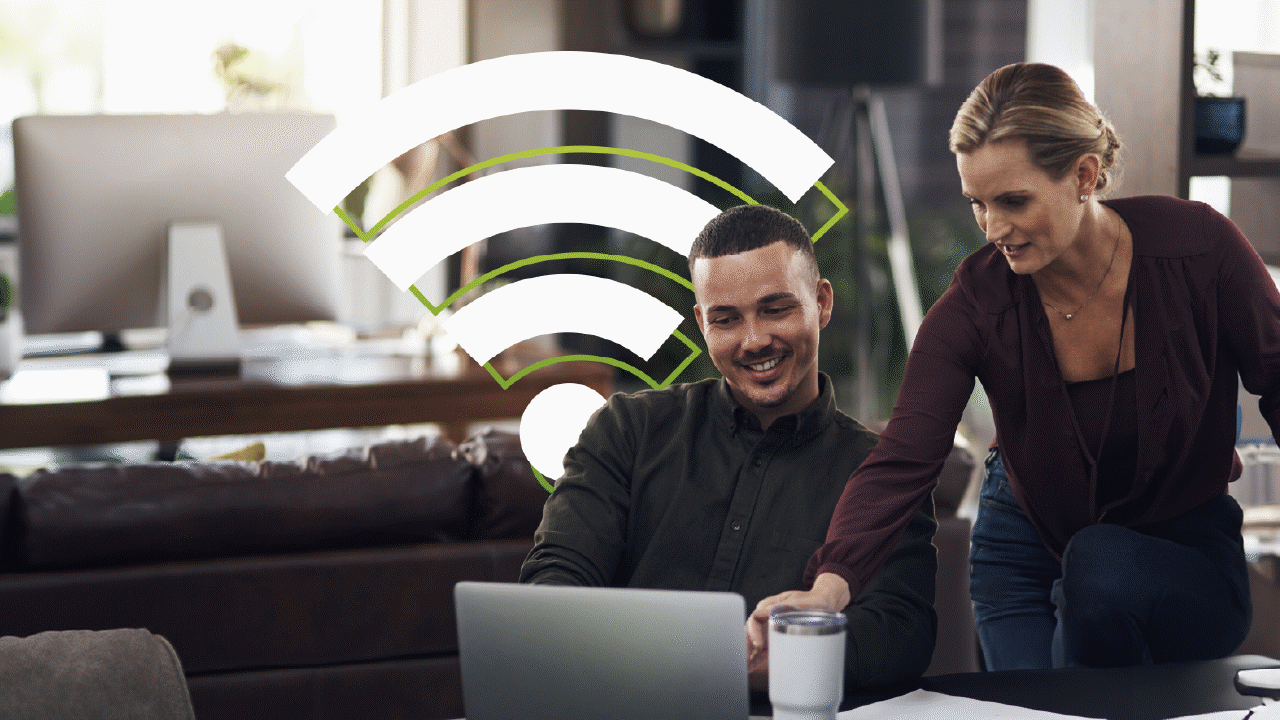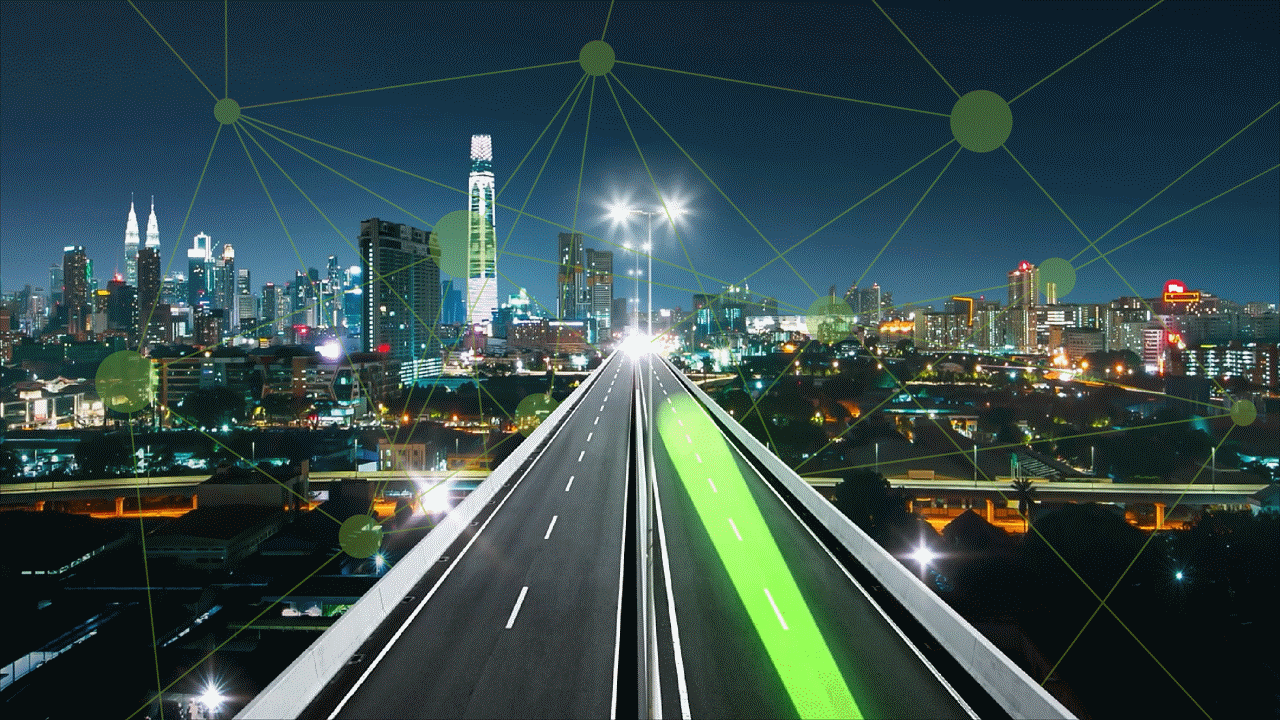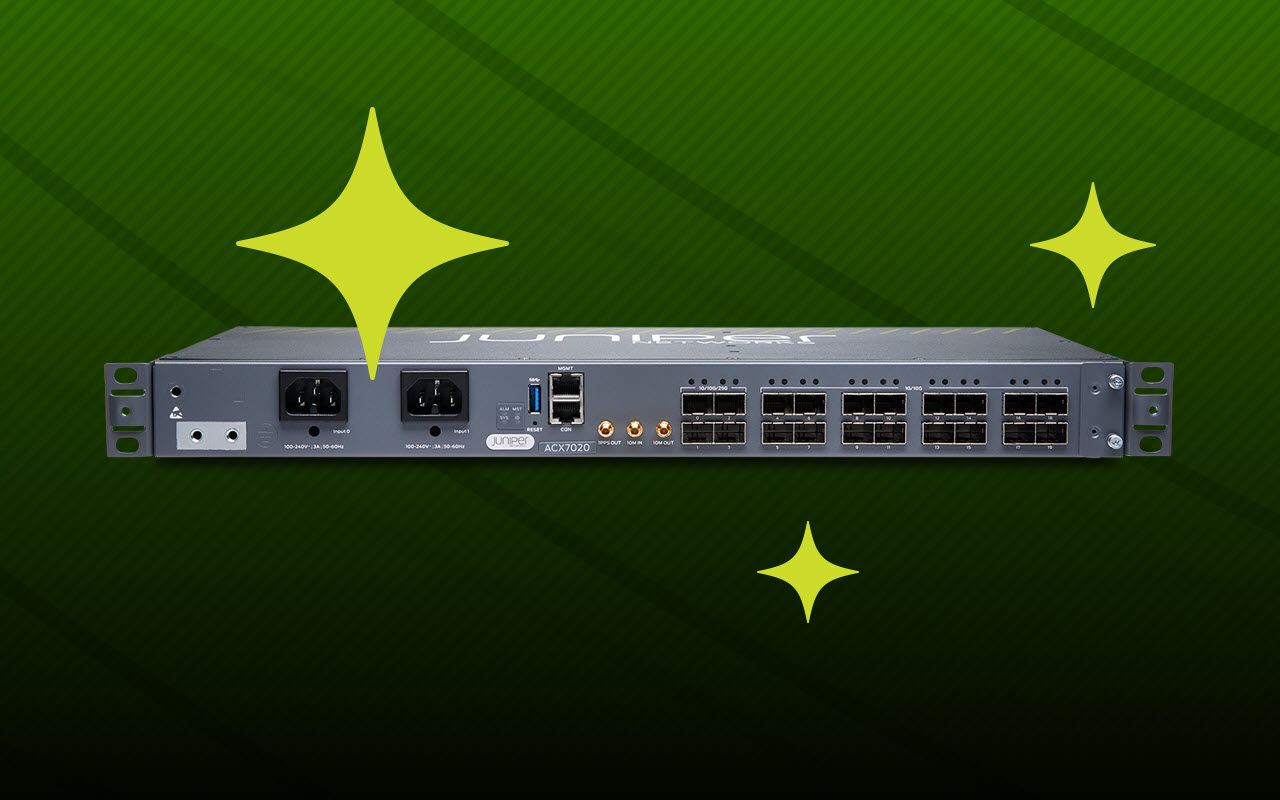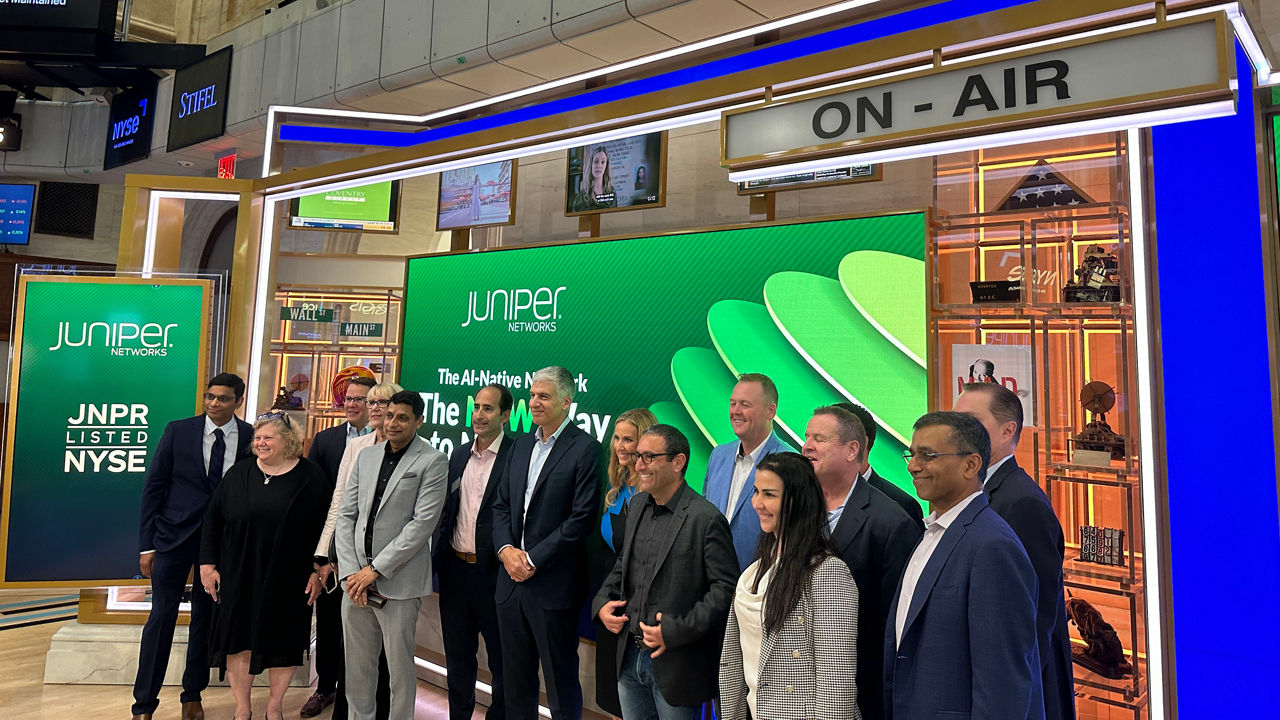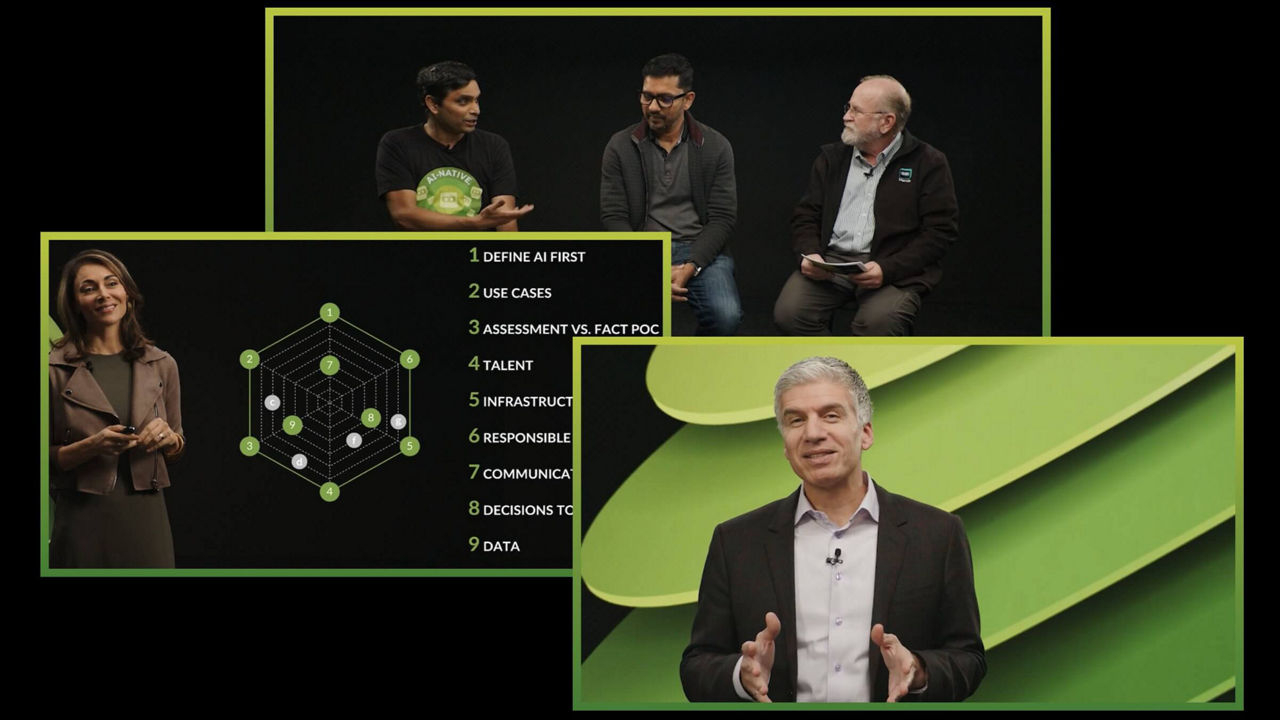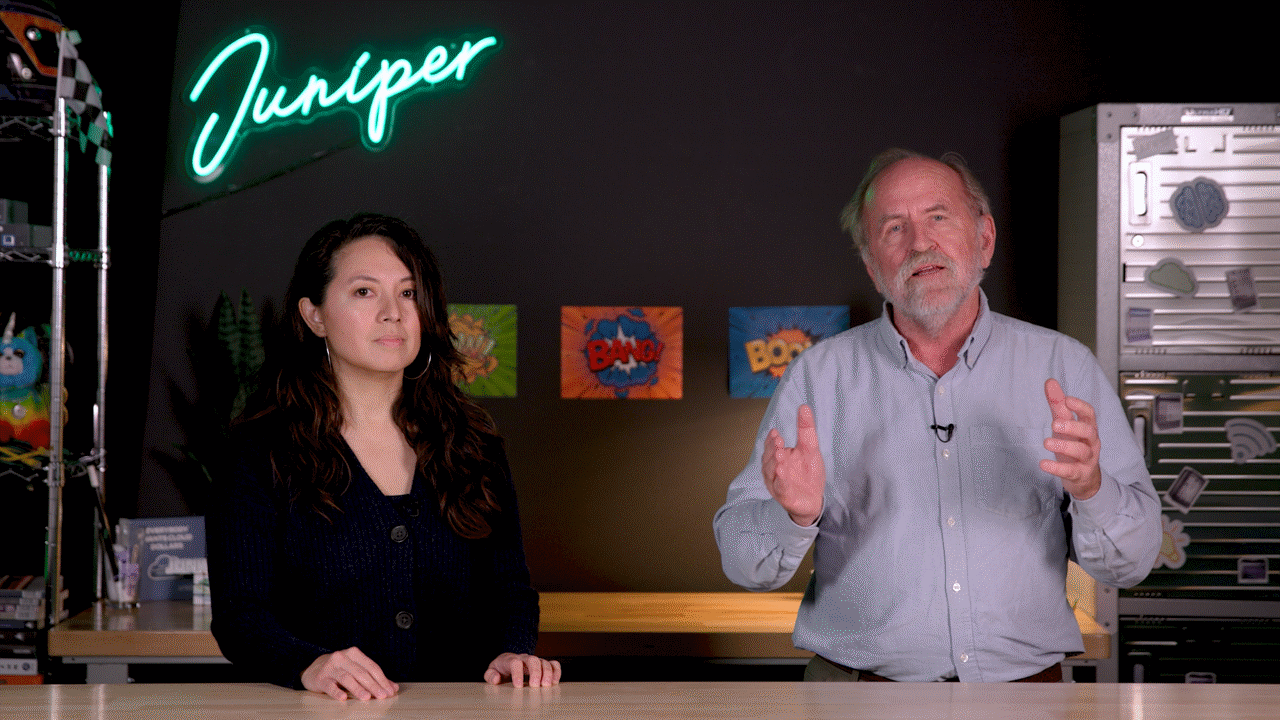CTS 353: Introducing the EX4000 switch (Sponsored)

CTS 353: Introducing the EX4000 Switch (Sponsored)
This episode on the EX4000 is sponsored by Juniper Networks.
Rowell, François, and Abhi discuss the release of the EX4000 switch from Juniper Networks. Abhi, a product manager at Juniper, shared that the switch will be available on February 12th, just in time for Valentine's Day. The switch will come in various models, including 8, 12, 24, and 48 ports.
Also discussed is the importance of switching in network infrastructure and the need for upgrades to support new access points like the AP47s.
What’s new with the EX4000 is how quick the boot time is. 2 minutes for the EX4000 to get up and running.
Another great benefit of the EX4000 is it is much quieter from the other EX switch line. This switch would go well in open office environments. It’s also perfect for higher education or retail environments.
Out of the box the EX4000 will support CloudX and have additional telemetry. To work natively with the Mist cloud.
It still operates on the same Junos and will be easily managed in the Mist dashboard.
You’ll learn
Who is this for?
Host
Guest speakers

Experience More
Transcript
0:07 hi everybody Welcome to a brand new episode of the clear to sand podcast my name is roell De unio your co-host here
0:14 alongside with Francois your other co-host how are you doing Fran very good thank you R how are you I'm doing great
0:21 it's it's wonderful to record again get to have other people on the show so we've got a special guest from juniper
0:28 we've got Obby from Sundar from from juniper who's going to talk about some new releases coming out from juniper
0:35 which can be very exciting especially around this time that we're recording where it's close to
0:42 wlpc it's also close to um Mobility field day so uh every year we always
0:50 hear about these new announcements from juniverse so how are you doing Obby I'm doing very well thank you for having me
0:56 here yeah it's great to have you here and uh I you and I have met uh quite a
1:01 few times just from working um at at in higher ed and then we've also seen all
1:09 of us all three of us together at Mobility field day so I think it's great to have you back on we have uh and the
1:18 every time I speak with you guys I learn a lot so I'm excited to be here uh well I think it's the other way we learn a
1:24 lot yeah both way
1:30 well uh I'm excited to hear about what you're going to present to us and and
1:35 talk about and we want to just keep it a open conversation um as we do with every
1:41 guest who comes on to the show but um why don't you also introduce yourself to everyone who who don't know who you are
1:48 yeah sure um my name is ABI shamsunder I'm a part of the product management team at Juniper Networks I focus on all
1:55 things switching and and the software that manages switching it's called wir Insurance uh and today uh I'm excited to
2:04 talk about switching very surprisingly I want to talk about you know a brand new
2:10 Switch uh like a true product manager I'll start with slides well you know uh
2:15 after that we can go into as many details and questions as we uh as we want to go about but I'm super excited
2:21 about uh uh new product that's about to hit uh very soon very close uh two days
2:27 from today when we're recording uh and it's the ex4000 switch yeah all right
2:33 there you go so the ex4000 just to be available right before Valentine's Day
2:39 so for all your loved ones out there and I'm talking about your network because we all love our Network right this this
2:45 could be a wonderful gift it's like a hate love relationship
2:51 right that's for sure gonna be only love love after this
2:57 hopefully Ione make up but we we wanted to talk about switching because um
3:04 although this is a Wi-Fi Centric podcast with the new Wi-Fi 7 APS coming out they
3:10 do change How We Do infrastructure right because there's uh Poe requirements that
3:15 are changing uh a lot of these APS have up to 10 gig ethernet ports now so at
3:23 some point a lot of us are going to be swapping out the switches for newer
3:28 capable switches to meet today's standards so I think I think that's a a
3:33 great way to start this year off as we talk about Wi-Fi 7 that is so true uh the the technology
3:41 treadmill on Wi-Fi is is just been going faster and faster in the Last
3:47 5 Years uh we have Wi-Fi 7 now and definitely a switch that that uh you
3:53 would need a switching upgrade when it when it comes to um you know higher power that is required for powering up
4:00 that many radios that you will have on on on the APS and obviously we're turning out more traffic through those
4:06 uh through the airwaves in spite of being half duplic so uh you you need you need bigger switches at least um things
4:14 that can switch packets faster for you so definitely this would be one one
4:19 amongst them yeah I mean talking about pushing traffic half duplex over the air but we're approaching wired speeds that
4:29 we're used to to um and I think one of the the first questions that comes to my
4:34 mind is I'm used to seeing like a ex 4100 4400 4300 this one's the
4:42 ex4000 so why introduce an ex 4,000 model
4:48 switch so we've been uh in the process
4:53 of actually upgrading uh the switching line but one thing that was extremely
4:58 important for us was also to bring out switches that are uh Cloud native and
5:04 also to meet current demands it needs to be fast fast could be many things um we
5:11 needed something that that's built ground up uh with inputs from how do how are we able to boot faster um you know
5:19 we wanted to be able to make sure that the boot time for the entirety of of the
5:24 switches uh is less than two minutes that was a gold standard that that we set off and we started
5:30 uh this project you've experienced the maps for us you know the map boot time
5:35 was an extremely critical factor and that comes from top down uh for for us
5:41 uh boot time is down time reboot time is down time uh whatever whatever upgrade
5:46 time is downtime and none of that should be too long as a whole and uh We've
5:52 we've followed something very very similar approach uh in terms of at least the thought process of how we built the
5:58 aps this this switch you would see you know there's a whole bunch of fast things that you would see on the slide
6:06 uh we wanted to make sure that it we took in uh the goodness from what we've done from a AP perspective bring it on
6:14 the switch side but also take some of those uh elements and also make ourselves ready for the future uh Wi-Fi
6:20 7 is something that you spoke about so for us uh this needed to be this new
6:25 line of switching uh to be brought about so in know the I think the boot time is
6:31 very important uh for us on the operational side of things uh when you guys came out with the uh 17 seconds
6:38 boot time for the M AP that was like incredible um it's not really something that you know everyone can appreciate
6:45 but you know if if you've worked with other APS and you waited five minutes or three minutes for the aps to put up we
6:52 really appreciate the how fast is but like you said it's also good for down down time reboot Time upgrade time all
6:59 of this is as the the the question that I'm wondering is how are you able to uh
7:07 shrink that boot time is it like the same Os or are you not doing things that
7:13 we were doing before like how did you guys make it happen pretty much that's my question oh couple of thoughts uh so
7:21 there are things that we don't do on this switch uh for example roel you mentioned 4100 uh 4100 can also be used
7:29 uh in a typical campus where we speak about uh let's say evpn VX land even at
7:36 the edge uh where you're able to Route traffic with you know uh and then
7:41 perform group based policies and and things of that nature this which is focused on being able to cater to a
7:49 really uh select uh line of customers who are focused on powering uh a couple
7:56 of verticals that I can that uh that comes to mind you know higher education um uh retail places where the focus is
8:04 uh not routing at the edge but focus on is is providing power so you will not
8:10 see us doing evpn VXL on this line for example that that's uh but there's also
8:16 uh you know over a period of time youve built a switch for such a long time there are things that are that are
8:21 accumulated over a period of time so you go through when you're building something ground up you say I don't think I need this and those elements are
8:27 taken out and that's what you know takes down so we we obviously stri some stuff
8:33 that that we don't require but we also said you know since we're building it ground up what are things that are
8:39 accumulated over a period of time and what what are things that can be actually purged and that all results in
8:45 in and that that was the whole operation operational efficiency that was driven
8:51 to build this product and was it only software or did you guys take any hardware decisions to meet that goal of
8:58 booting under two minutes as well yeah so uh it does come with the higher performing uh processing processing
9:05 power uh that's also a part of it there are two two reasons why we did that obviously we said on the top right says
9:11 AI native I know it almost if you say cloud native AI native it seems like
9:16 buzz word Bingo but the idea honestly was uh was genuinely uh for for us to
9:22 make it AI native as in for us to actually do any calculations of the cloud we need Telemetry and we need it
9:29 at at a rate at which we are able to make meaningful sense out of it so the the processing power required for the
9:35 switches were also a part of that decision but it also helped uh in in the boot times as
9:40 well yeah interesting yeah that's a that's a greatly improved boot time
9:45 because I was just upgrading some switches not too long ago I think they were the 40 the 4100 and we were waiting
9:53 maybe 10 15 minutes so to reduce that all the way down to 2 minutes you know
9:59 no we're we're going to start timing it once we uh get our hands on yeah so when you're upgrading obviously you're
10:05 copying an image to the device and then you're rebooting this is spe the two minute is specifically the reboot Time
10:11 just boot just starting up from how much time does the data plan have impact
10:17 that's pretty much the the downtime got it got it the copy operation you know uh
10:22 it's your your packets are still forwarded so that's okay okay interesting all right is that the only
10:30 big update with the for okay so one of the things that uh was a
10:37 consistent feedback for us from a lot of places again again the vertical that we spoke about uh was we needed something
10:45 that is quieter um you have to experience the switch uh I had a room
10:52 full of people uh where I was presenting this uh late last year I had the switch
10:57 plugged in and nobody knew there was a switch in there it's probably the quietest switch uh that we have built
11:03 probably quietest in its class I can't claim that yet but definitely the quietest switch that we have built um
11:09 and and this was for use cases where in you know under desk kind of use cases where it's not fanless or uh it's
11:16 sitting right beside a cashier in a in a restaurant uh these were you know real
11:22 user feedback that we had to honestly take and make make a switch usable in an all environments so uh that's probably
11:29 my my favorite part apart from you know it being the fastest to Bo you know dynamic Port profiles it's much faster
11:35 because it ships with cloudex maybe we can talk about cloudex uh in a little bit but it it ships natively with
11:41 cloudex fast and Perpetual Poe basically when the devic is booting as well it's still providing power let's say you hit
11:48 uh an upgrade um it's still continuing to provide Power so that it doesn't take power out from an AP that needs an extra
11:56 long boot time or a phone whatever that is is being powered it's it's it doesn't have to go through a boot cycle and then
12:03 start forwarding packets the moment our data plane is up then you immediately start fing packet so fast and Perpetual
12:10 per become very critical so those are those those are other elements that are part of it as well but probably my
12:15 favorite feature is is how quiet it is as as a functioning for switch with fans
12:22 that's a feature that I appreciate because I put in quite a few Juniper switches in areas where it needs to be
12:28 quiet and I I have had a complaint about the fans on the ex switch so I did have
12:34 to remove one of the power supplies having yeah so we didn't have redundant power supplies but I had to
12:41 put in a procedure saying where well you know if we lose power just someone has to physically go there and plug in the
12:47 other one but um I'm just curious like with with higher Poe requirements I
12:53 would assume we need more fans for the cooling and so Hardware wise our are are
12:59 are they modular fans or are they builtin uh fans we can't swap out and
13:06 then you somehow did sound dampening in the in the switch itself no there's some
13:14 uh we went even lower um we said it's obviously built in uh this is a fixed form factor uh switch um the one of the
13:24 things that we did is the switch uh always assumed that you had to have uh
13:31 the fans blazing when it boots up uh because that that's how it was programmed and even in ambient
13:39 temperature uh the fans were on um at a higher speed when it was not required to
13:44 be right the fans should still go up when you're placing it in a 50°
13:49 Centigrade or a you know uh or a higher temperature environment the fans do
13:56 appear will will go up at that point in time but it's when it's placed in an office environment there's already
14:01 enough cooling you're sitting right beside the cash register that means you're you're in a in a great place
14:07 there was Intelligence built in to figure out what is the temperature outside and what is the amount of cooling that is required for the fans to
14:13 keep it quiet you still uh that that kind of uh and obviously the fan modules
14:20 are different uh uh the hardware perspective those were taken into consideration but uh a lot of what we uh
14:28 what we did get is is by optimizing uh some of the fan speeds when when it's not required for it to be that loud uh
14:36 yeah there there's new fan modules in there as well that that's uh that also helps okay and H how about the depth of
14:43 the switch is it going to occupy the same amount of space as like a
14:48 4400 model switch or is it it's it's uh much smaller I have some
14:55 um slides where we speak about but it's not it's it's not the full Ru like a 44
15:01 or 4300 you know the the switches that you've seen it is it is
15:07 slightly um much smaller form factor
15:14 um to yeah feel free to show us Abby we'll uh if you want to share your
15:19 slides well U if you guys are listening to this audio we'll put the video on
15:24 YouTube so you guys can see what the switch looks like um we'll try to describe it as uh
15:30 as best as as possible uh yeah oh hold on
15:38 so I don't have the picture of the switch itself actually you can see it kind of from here on this representation
15:44 it's it's much smaller uh in a in a form factor perspective uh I'll also try and pull out a slide of of the switch itself
15:51 uh while we're conversing but uh and and so here on the slide we can see that you
15:57 actually have different models you have eight Port 12 Port 2448 and then you have multi- gig uh Poe
16:05 and then uh non Poe I'm guessing yes uh do you want to do you want to explain the different uh flavors definitely so
16:14 if you see uh one of the uh common things that we also heard and that's uh
16:21 that is again a new thing for from a juniper perspective uh is our um eight
16:27 Port family we've never had an eight Port eight portter before uh this is going to be the first uh in in the
16:34 ex 4,000 family or or any ex switch family that we are introducing our eight
16:39 Port uh with uh Poe support in them uh two 10 gig up links uh you also have the
16:45 24 and 48 port with the multi rate as well so you get you know uh 2.5 gig
16:52 ports uh eight of them uh in a 48 ports so that's if if you're technically
16:58 looking at AT AP distribution uh as long as you know uh usually also if many
17:04 other with many other things uh that are getting plugged into and in accordance
17:10 to uh you know how do you salt and pepper APS across multiple uh you know multiple line cards
17:17 of a given virtual chassis virtual chassis is you know uh in a non uh
17:23 Juniper lingo sometimes it's called stacking uh but essentially if you want to make sure that your APS are spread
17:30 across different line cards of a given stack or a given virtual chassis then
17:36 you know and if you're Distributing eight per switch you can actually do eight ports of multi- gig uh on on the
17:43 48 Port multi multi- gig switch uh so and you also have dedicated stack stacking cables that means you're you're
17:50 just plugging in DAC cables 10 gig da cables um for you to easily plug in and
17:57 then the switches form virtual chest all by themselves they'll hit the McLoud get its config and uh all things that You'
18:04 have done with word Assurance you know a zero touch provisioning uh easy provisioning and also hopefully the
18:10 speed with which the devices would help uh but definitely multi-rate ports are ex uh on on 48 Port you you get eight
18:18 eight of them on 24 Port you get uh four of them uh you also get on the 12 Port
18:24 skew for um for uh of the uh 2.5 gig
18:30 ports that means even in a fanless model you get a multi rate um uh line C or a
18:37 multi four multi multi rate ports for you to plug in APS if you're doing under
18:42 desks or um uh in in especially in education um if you're doing in
18:47 classroom below the uh Podium kind of switches this this would probably be
18:52 very helpful or even in retail if you have like a small store and you just need you know a couple of APs yeah you
18:59 can okay and the um the connection to the cloud is that included in the two
19:05 minutes so no 2 minutes uh you you probably are adding another 45 seconds
19:10 for it uh it does go through uh the process of uh you know zero touch
19:16 provisioning uh the device boots up uh it has cloudex built in that means it
19:21 knows it doesn't have to download any further firmware uh for it to be uh for it to reach the cloud so when we're
19:27 shipping it it's it ships with Cloud cloudex for folks who don't know um Cloud X is um the new iteration of us
19:36 moving away from what we had traditionally been doing for the last four years that was we used a custom
19:42 Port Port 2200 on TCP for us to communicate from the switch to the cloud we no longer do that U it's very APS as
19:50 in uh it it communicates to the switch it communicates the switch communicates to the cloud over Port
19:57 443 um and so you don't have to punch holes specifically outbound with from your
20:03 network going outbound you never usually have you you've never had even previously had to punch in anything
20:09 coming in so uh similar to the access points right very similar to the access
20:16 points just a different end point M okay okay so they they the switch will
20:22 reach out to a specific address in the cloud using 443 and then you'll get
20:28 unboarded that way correct and since you can build templates well in advance uh
20:34 the moment it completes the zero touch provisioning it also get gets it gets its config and for all APS and phones
20:41 and stuff we usually use Dynamic Port profiles that means they'll match off of um lldp tlvs any of them if you're doing
20:49 maps for example just match on ldp description starting with M and the aps
20:55 get onboarded automatically W phones uh can cameras for example uh if you're
21:01 doing uh any camera of that sort most in fact any power seeking device always
21:07 usually negotiates using lldp so and we could use any of the lldp tlvs to say I identify Myself by by the
21:16 description the uh oui the oui is is probably complicated because different
21:23 manufacturers have different oui but you could do system ID uh lots of functions
21:29 within tlvs that you could use so you're saying we could do like zero touch provisioning so if I have if
21:36 I work for retail company and we're opening a new store we could ship the AP the APS and chip chip the the switch and
21:44 then connect everything and everything gets configured without really doing much that is definitely the intent uh so
21:52 for the most part uh if you think about the entire process of uh building a store for example
21:59 uh especially if you're converting a store uh the way you would Envision this is uh you're going in there is an
22:04 existing set of store uh devices that's already there and usually you never have rack space to add another uh one right
22:11 away so you go in a couple of hours prior um just form the virtual chassis
22:17 uh just seek a one single port on the management Port uh uh on the existing
22:23 infrastructure connected to the Management Port of the Juniper switch the Juniper switch will ztp P get its
22:29 config will become a virtual chassis automatically uh you don't have to connect the clients yet you wait you
22:34 wait for the store to close and all you're doing at that point in time is just uh moving cables from the the
22:43 existing switch the new switches and then off you go U I've done deployments of uh switches
22:51 just using this methodology wherein you're in and out of the store within 2 and a half to 3 hours and the longest
22:58 pole in the tent being actually having to go install switches probably higher up in the racks or somewhere in the
23:05 middle of the store somewhere up in up in the air but barring that this can be extremely fast uh you can expedite your
23:13 on boarding and cut over process much uh significantly faster
23:18 MH and then when the I'm guessing that when the switch connects to the cloud the cloud would know that it's a ax 400
23:25 4,000 sorry it does it uh like you know how the aps have a
23:31 claim code the switches all have a claim code too the claim C associate itself to a serial number uh a a platform a SK all
23:41 of that is is built in the back end
23:46 okay yeah I mean that's the easiest way to do it I you you no longer have to set
23:51 aside a block of ports and say these are my AP ports these these other sets are
23:57 my camera uh security camera ports for for me it's
24:02 just saying what is what am I seeing on lldp oh I see a Miss AP assign an AP
24:09 Port profile oh I see this camera assign the AV or the security Port profile that
24:16 has all the vlans and I think that for us uh when we talk about efficiency and
24:23 and quick to deploy um that's what I look for as someone who Consulting with
24:29 other people it's like well here's how fast we can be in deploying your downtime is is very low we're not
24:36 talking days of downtime as we try to cut cut over to to this network and
24:42 makes it a lot easier yeah if you're watching the screen this
24:47 is where you would come in in in The roel Spook about Port profiles for as Port profiles are the definitions of
24:55 personas that are coming into the network for example uh what what does an AP require a trunk
25:00 Port um and then uh Port description uh What uh what are the networks that
25:06 you're allowing and also the physical properties speed duplex Mac limit all of
25:11 that makes a p profile you build that once and subsequently all all you would
25:17 do is just say anytime anything that matches this definition I'm saying saying llddp Port description starts
25:24 with mist then automatically put this in the AP Port profile what this does is it
25:31 takes away like roel said the the over overhead of having to go
25:37 assign ports to their port profiles as we call them every single time you do it
25:43 the hardest part is just the these Port profiles once yeah and a lot of the installers get confused by that because
25:49 they're so used to having some sort of patch Matrix and they're like where do I plug in the access point where do I plug
25:55 in the camera and they get confused when they say I don't care just plug it in and it'll do the
26:02 rest yeah it it definitely and also it takes out some of the manual errors that may happen saying somebody plugged in
26:09 the wrong Port one thing I I will say and probably as a confession uh whenever
26:14 you're migrating from another popular vendor to to us uh we start Port
26:19 numbering schema from 0000 and the uh the other vendors as a whole they
26:25 usually start from 001 for example and if the cut sheet or the port mapper like
26:30 you said does not account for it you know there might be some chances of somebody plugging in assuming that it
26:38 this is these are the odd ports these are the even ports and it's vice versa so some of these errors this is
26:45 automation yeah this is what we would want to do yeah minimize the amount of errors and and that way uh but let's say
26:53 let's talk about the M gig Port though because are those specifically on set ports or do you just
27:01 have a specific number of ports that can be M gig um there can only be eight ports and
27:08 they are specifically the first eight ports zero through gotcha gotcha so if you've got an AP 47 you're GNA want to
27:16 say hey it has to go any port as long as it's the first eight first eight yeah
27:21 okay do you have any fancy LEDs that let you know if uh you're out of Poe or if
27:27 you're connect to the cloud or anything like this yeah the cloud definitely yes um okay so the thing that we want again
27:37 there's a lot of uh Cloud elements that that we have built uh every time uh you
27:42 go to the switches page uh we'd want to showcase for example what is the state of the network uh if a device is is not
27:48 connected and we do this with the aps 2 today uh and it's been uh uh for example
27:54 this particular AP it says no IP address if the AP is not connected to the cloud
27:59 you technically shouldn't be getting any any information from the AP right how how do you know that the device is not
28:05 connected to the cloud because it doesn't have an IP is because we share the information or Bluetooth to the
28:12 nearest uh connected AP MH we do something very similar to the with the with the switches as well um if there is
28:19 a switch that is connected to an upstream switch which is already connected to the cloud but the switch won't come up it will tell uh the same
28:27 same f few things right it will say I am not connected because uh you know I
28:33 don't have an IP I don't have a default gateway the DNS server is wrong my cloud is unreachable because your firewall is
28:39 blocked whatever the answer is you have this and this is seen on the LED on the
28:45 switch itself as well as this is percolated over lldp to the neighboring
28:50 switch that way that switch can tell the cloud saying hey I have a switch connected uh looks like the default
28:57 gateway isn't reachable then they say oh I put it on the wrong native vand and they fix it so you don't have to go
29:03 truck roll console in figure out what's going on that's that's the intent try to make it as Cloud native as possible you
29:11 should add a you should add a Bluetooth radio in there so you can talk to the aps
29:17 uh I'm sure that part was that part of the discussions it has been there is uh yeah
29:24 I'll I'll talk talk about that to you guys offline it's it has been a very it makes sense now that you're
29:31 explaining it it makes sense to me yeah um that's cool okay and those are all
29:37 features that come included with the 4,000 the ex4000 it's not like because
29:43 it's a lower number you know it's a ex4000 versus a 4100 that you're not
29:49 missing any features that you would see in the in the dashboard no all all the
29:54 things that that we're doing everything that that comes as part of uh as monitoring uh as providing Telemetry all
30:01 the way from your bad cables to MTU mismatches anything layer one layer two
30:08 uh all of them are still continue to do the same because this switch was built for Telemetry uh to be consumed in a
30:14 very optimal fashion and none of that changes the one important thing that's the difference between the 4100 4,400
30:21 line would be the fact that it it does not participate in actually being a part
30:28 of uh evpn VX topology wherein it itself is part of a or or a VAP itself barring
30:35 that uh everything else that you see uh including uh we we don't um you still
30:40 have the ability to do static routing uh you still have the ability to do basic OPF all of that still continues to stay
30:48 none of that changes and when you talk about Telemetry can you tell us a little
30:53 bit more which tele materal you're talking about here yeah so um for example example uh we talk about what is
30:59 known as these service level expectations right uh is where we say hey you've got all of these interface
31:05 anomalies this is where I tell you bad cable is the problem MTU is the problem there's a negotiation failure uh you
31:13 have congestion in the network because somebody's pummeling your interface at the rate at which you can't handle it and you're stopping to drop traffic all
31:20 of them at the heart of them are you know uh counter somewhere
31:27 in the switch right now what is the smartest and the most efficient way to
31:33 get that information out to the cloud is telemetry for us the Telemetry uh on on
31:38 all cloudex enabled devices especially the 4000s are no longer a pull model
31:45 they are push as in there is periodic uh there's on change all things that you
31:51 would uh think from a modern automation framework uh this piece of information being shared to the cloud uh is is uh
31:58 done either it's an event based or on change or periodic every minute you send me this particular um uh you know sensor
32:07 Telemetry uh is all done now directly from the switch you no longer are polling for it and that's why it's a lot
32:13 more efficient for us to gather that that information okay and the switch is they still running Jos OS they are they
32:21 are rning J so all the goodness that comes with it programmability automation
32:26 all all all parts still stay stays the same okay and then I'm guessing they'll
32:32 they'll they'll be cheaper than the other Series right they'll be your best pric switches this is probably yeah this
32:40 is our best pric switch not probably this is our price switch this is uh if you're looking for a switch that does
32:47 everything I said and everything I said it wouldn't right uh which is for the
32:52 most part from an aess switch perspective they should fit the B you're looking at the right switch Yeah I think
32:57 like you know I think it's it can be a very popular switch uh because in a lot of uh
33:03 places as an access switch it it meets the requirements right uh if you if you
33:09 were to connect U like you said APS cameras maybe VIP phones or you know
33:16 workstations I think it's uh it's uh it can be a very popular switch for you
33:21 guys it it definitely is and and for us uh again that that part of APS and cam
33:28 were very critical uh we wanted to make sure we are able to do 60 wats of power and a very high uh you know uh wattage
33:36 of power as a whole apparently uh yeah obviously Wi-Fi 7 APS uh you'll need up
33:42 uh you'll need that much power but the modern cameras that are coming through uh not only are just doing camera stuff
33:49 they're doing infrared they're doing some basic Intelligence natively on the cameras before something is their
33:55 Telemetry goes off means the need more power so all of them are usually more IP
34:02 IP based now so uh there's a lot more um
34:07 devices that are coming onto the network that require more power and this was very critical for us to get this uh
34:13 model right with even though you know uh it is the best price switch uh we wanted
34:19 to make sure you get uh you get the right power for especially you're doing retail if you're doing K through 12
34:25 higher education these are uh you know as they call Ras tax and and we wanted
34:30 to make sure that's there and it gives you all of that and in terms of Licensing it's just a it's a typical M
34:37 license where you get like the 12 port and I guess you guys will have a new eight Port license no eight and 12 are
34:44 the same oh eight and 12 okay so it's 12 24 and 48 okay if you've seen we'd like
34:49 to keep the minimum the lines on your when you yeah we appreciate that it
34:55 should be two at most three lines obviously you need you know da cables and stuff like that but the product
35:00 itself uh minimal number of lines so you will see uh u a combined skew uh for uh
35:07 software on the switch if if you're buying any this uh and then the software for uh for uh the Miss subscription and
35:14 the device itself these are two things uh that that that come as a part of the quoting so uh the the power cord comes
35:22 with it yes okay thank you
35:28 sounds like you you had an issue before Fran no it's yeah it's you know you never know you know it's better to ask
35:36 no I'm the same way I had to ask someone like it comes with the power cords right because I don't see them here yeah and
35:44 since all this is a fixed form factor version you're not looking at you know adding up links or not getting the right
35:51 SFP I mean it's already it's a fixed Uplink module have to change it out
35:57 correct yeah and so that Uplink module is it is it two ports is there a four
36:02 port capability or with it can be ports if you'd like to uh two ports are
36:09 dedicated for virtual chassis but you can if you're not using the um you know
36:15 as a stack switch as a member of a stack switch then you can just use all four of them to Uplink them or for you can use
36:21 four 10 gig ports or it could use 10 two of the 10 gig ports to go down to a server somewhere it's a choice so for
36:29 the chassis portion where you're going to you know stack the switches you're using two of the
36:36 SFP um Bay in the front of the switch there's no dedicated
36:42 um no dedicated Cable in the back or no there's no dedicated Cable in the back
36:48 uh you would use um you know the two of the ports and you could you could use all four if you'd like to there'll be no
36:54 dedicated ports at the back uh you could just use the two here and this is the same model that that we have tried to do
37:00 with the 4100s as well so we're going to continue doing this um for for this model too and and for the most part is
37:08 the hardware underneath is it the same as the other switches no uh there has been a few
37:16 changes that we have done so you will see you know as I said uh slightly higher processing power uh it is
37:24 different okay I mean what what else should we know about this switch it's pretty
37:30 capable um I want to I want to ask if you guys have any features that are not
37:35 software enabled yet but that you're May thinking of adding or enabling in the future I don't know if you can answer
37:41 that question but ask it there is a USB port uh that we have not done I can't
37:48 speak much about right now but there is a USB port that that's there uh that I
37:54 bet you Fran it's going to be Bluetooth capable through the years for
37:59 short just add a Bluetooth adapter the Gateway yeah you connect the
38:06 gway of some sort interesting okay or you can charge your phone yeah I or you
38:12 can charge your phone yes that's what I use it [Laughter]
38:19 for I mean the other part is um all the ports all the standard uh Port security
38:26 functions are supported from uh from the get-go that also means it integrates
38:32 natively with the misn uh you can actually make this truly zero trust by
38:37 saying every single port the revenue ports that are out there just don't bother make everything uh A2 2.1x fall
38:44 back to MB and uh you can make your at least anybody who needs to go through at
38:49 least go through goes through a first uh order of uh Security check to say
38:55 whether are you allowed to get into the network or not not you could also then double down put them on the right velan
39:00 automatically all of that stuff is is possible um but uh again in you you guys
39:08 have hopefully already experienced the Mis snack uh the most beautiful part
39:13 about it is you don't have to have a server on Prim uh you're not uh looking and maintaining its servers uh that that
39:20 needs to be uh you know upgraded so uh if you want to try it out you just go
39:25 enable uh Miss Knack and it starts working right away I like the fact that the Telemetry
39:32 from The Knack is also integrated into yeah Maris so it's easier to
39:37 troubleshoot it is and it continues with this too uh so all Telemetry will be on
39:43 seen on the switch and sides you can ask Marvis questions on why is my uh you
39:48 know switch not able to help this device on board connect we'll troubleshoot and we'll tell you the
39:53 answer okay so if we want to learn more about this switch is uh where should we go do you guys have any documents um
40:02 data sheets that you have available yeah so uh as soon as it's launched uh you'll
40:07 have a landing page uh there is going to be a detailed data sheet um as well as
40:13 um there are resources that will be out uh as part of you know uh uh as part of
40:19 this launch uh there is specific Tech videos that are made dedicated to speak about the verticals that displays in as
40:26 well as um uh we we'll we'll share all this information on uh on juniper.net as
40:31 well as some of the social handles that we have cool okay we'll try to relay them on our show notes when it's
40:37 available we'll we'll includ links on on the on the show notes but I'm curious like you have the launch but how soon
40:43 after will it be orderable yeah so there are two parts uh you will see uh there is the uh MP skes
40:52 that are going to be order orderable uh right away after the launch which is the 12th of Feb uh and then there is just
41:01 the pce cues that will be uh so and they will be available end of February so
41:06 you're not you're looking at probably 10 day 20 days more for you to get actually handson if you order uh immediately and
41:14 then there are the peace cues which is uh going to be available the fourth month of February which is second
41:20 quarter of uh 2025 so it's it's coming out very soon
41:25 by the time you probably are seeing this video You're 5 days away or 6 days away from uh laying your hands on these so is
41:32 this is this replacing the ex 2300 no this is uh augment uh we are
41:39 adding another line you know prior uh if you look at our positioning as well you
41:45 will see um as position this right all the way up front uh I I told you it's
41:52 the best price switch but it also you know not modular that means form factor
41:58 so it'll be one one step before the 2300s uh so
42:03 okay yeah this slide is good we'll probably also add it in the in the show notes so you guys can see like the where
42:10 the 4,000 sits in the line of switches that you guys have but it's pretty much at the beginning
42:17 yes awesome well thank you I thank you for being on the show with us it's always a pleasure to talk to you um yeah
42:27 very much for for the opportunity to come on this show and uh you know for me to talk about the switch thank you thank
42:32 you very much wor if anyone has any questions feel free to send us your
42:38 questions put them in the comments of the uh video down below or and the show
42:43 notes page for for the audio but yeah it was really good information and I I actually can't wait to get my hands on
42:49 it because I do have some use cases for it and I'd like to try it out especially
42:55 uh having it being uh you know either the fanless models having it be quiet
43:01 but also there's features that I have clients that just they don't use those features like the evpn so this would
43:07 make a lot of sense I look forward to your feedback Royal yeah I want to see a picture I
43:12 want to see the AP 47 connected to one yeah do that y yeah just in time for
43:20 Valentine's Day you know two two pieces of Hardware coming
43:25 together ah all right well thank you for your time um and and thank you for for
43:31 sharing with with us the the new hardware the EX4 4000 and um again thank
43:37 you guys for listening or watching if you're on YouTube We greatly appreciate you if you found this useful let us know
43:44 or or hit the like button but thank you again for joining us on a new episode so thank you guys bye thanks bye

